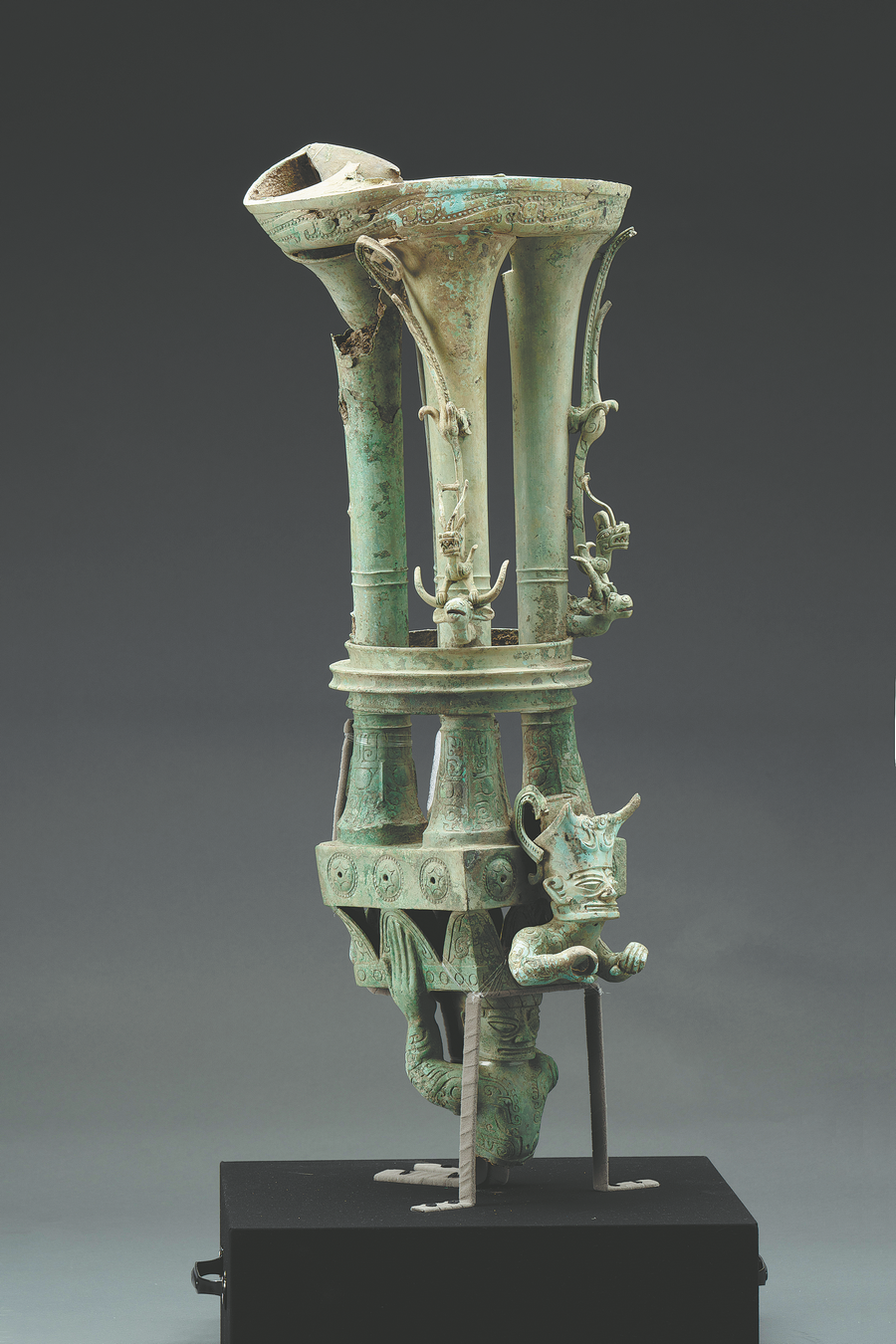

Numerous discoveries made during the latest excavations at the six pits show that the ancient Shu Kingdom was an important part of Chinese civilization. A number of recently excavated artifacts suggest a close cultural connection between the Sanxingdui site and other parts of the country.
For example, a copper zun and urns found in No 3 and No 8 pits are typical Shang Dynasty bronze artifacts from the central plains. Jade tablets and circular jade artifacts known as bi found in No 7 and No 8 pits have also been discovered in Henan, Shaanxi and Shandong provinces, and other areas of the country.
On the newly excavated altar's platform, which boasts 13 bronze human figurines, a small figurine carries a lei, a bronze container used during sacrifices.
Lei said this figurine occupied the key position on the platform because it carried an important item.
Wang Wei, president of the Archaeological Society of China, thinks that carbon dating of some 200 relics excavated from the six new pits explains the relationship between the Sanxingdui Ruins and the Jinsha Ruins in Chengdu.
He said the Jinsha site, which is 2,700 to 3,000 years old, was another important part of the ancient Shu civilization. When Sanxingdui declined, Jinsha rose, and the relationship between the two is greatly significant for studying ancient Shu civilization, Wang added.